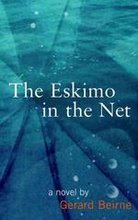Einstein, Poincare, Saint-Saen and Dead Beat Determine Simultaneity
So Hudson gets on his high horse again.
"It's always Einstein this and Einstein that with you." He sips his port, listens to Saint-Saen's Carnival of the Animals. "What about Poincaré?"
"Who?"
"See. In France, Poincaré has long been a hero. Known for his innovations in the qualitative studies of chaotic systems, for his invention of the mathematical theory of topology, for his contributions to mathematical physics, and for his philosophy of conventionalism, Poincaré was without any question the most renowned French scientist of the late nineteenth and early twentieth century. Ask Del_ight, she'll tell you.He cared as much about simultaneity as Einstein."
"I care too, Hudson."
"I know. I know. But Dead Beat, Poincaré was, beginning in the early 1890s, deeply involved in time-distribution networks.
D.B: At the Bureau des Longitudes?
HUD: Yes, where he would serve several terms as president. And this was crucial, because the astronomers and geographers of the Bureau were working intensively with the telegraphic transmission of time. This was not for domestic railroad use – or at least not in the first instance. Rather, these engineers and scientists were working at a much higher level of precision. They needed to determine simultaneity so distant observers could determine their relative longitude.
D.B: For cartographic purposes, since longitude measurements are measurements of time?
HUD: Precisely. Their goal was to map the nation, the empire, and then much of the world. Specifically, they aimed to find points of reference – for instance, in North Africa, Senegal, Ecuador, and Vietnam – from which the further mapping of the interiors could proceed. Maps were important for extraction of ores, for military domination, for the cutting of roads, and the laying of railroad lines. Railroad lines brought in more cable, and therefore more mapping, and so on. All of this constituted a major technical program, a great national moment. And the timing is fascinating."
D.B: Time Hud. It all comes back to time.
HUD: And time references.
D.B: Einstein, Poincare?
HUD: You got it
D.B: It's like I say Hud, time is the most important aspect of writing.
HUD: I think we may be in agreement for once, Dad.










3 comments:
Yep! you can ask me!
Yep! you can ask me! Poincaré rocks.
Saint-Saens too.
Post a Comment